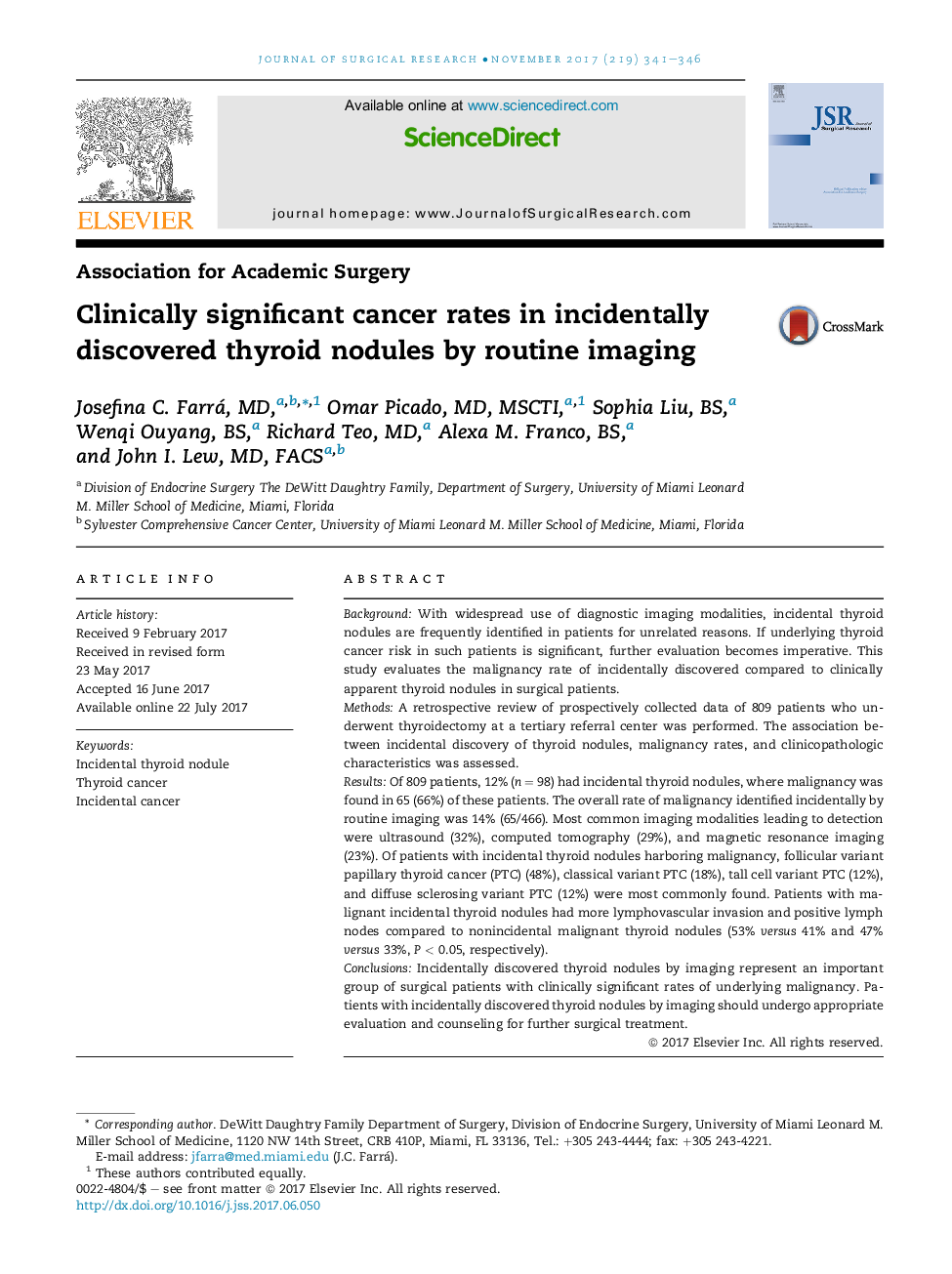| Article ID | Journal | Published Year | Pages | File Type |
|---|---|---|---|---|
| 5734011 | Journal of Surgical Research | 2017 | 6 Pages |
BackgroundWith widespread use of diagnostic imaging modalities, incidental thyroid nodules are frequently identified in patients for unrelated reasons. If underlying thyroid cancer risk in such patients is significant, further evaluation becomes imperative. This study evaluates the malignancy rate of incidentally discovered compared to clinically apparent thyroid nodules in surgical patients.MethodsA retrospective review of prospectively collected data of 809 patients who underwent thyroidectomy at a tertiary referral center was performed. The association between incidental discovery of thyroid nodules, malignancy rates, and clinicopathologic characteristics was assessed.ResultsOf 809 patients, 12% (n = 98) had incidental thyroid nodules, where malignancy was found in 65 (66%) of these patients. The overall rate of malignancy identified incidentally by routine imaging was 14% (65/466). Most common imaging modalities leading to detection were ultrasound (32%), computed tomography (29%), and magnetic resonance imaging (23%). Of patients with incidental thyroid nodules harboring malignancy, follicular variant papillary thyroid cancer (PTC) (48%), classical variant PTC (18%), tall cell variant PTC (12%), and diffuse sclerosing variant PTC (12%) were most commonly found. Patients with malignant incidental thyroid nodules had more lymphovascular invasion and positive lymph nodes compared to nonincidental malignant thyroid nodules (53% versus 41% and 47% versus 33%, P < 0.05, respectively).ConclusionsIncidentally discovered thyroid nodules by imaging represent an important group of surgical patients with clinically significant rates of underlying malignancy. Patients with incidentally discovered thyroid nodules by imaging should undergo appropriate evaluation and counseling for further surgical treatment.
